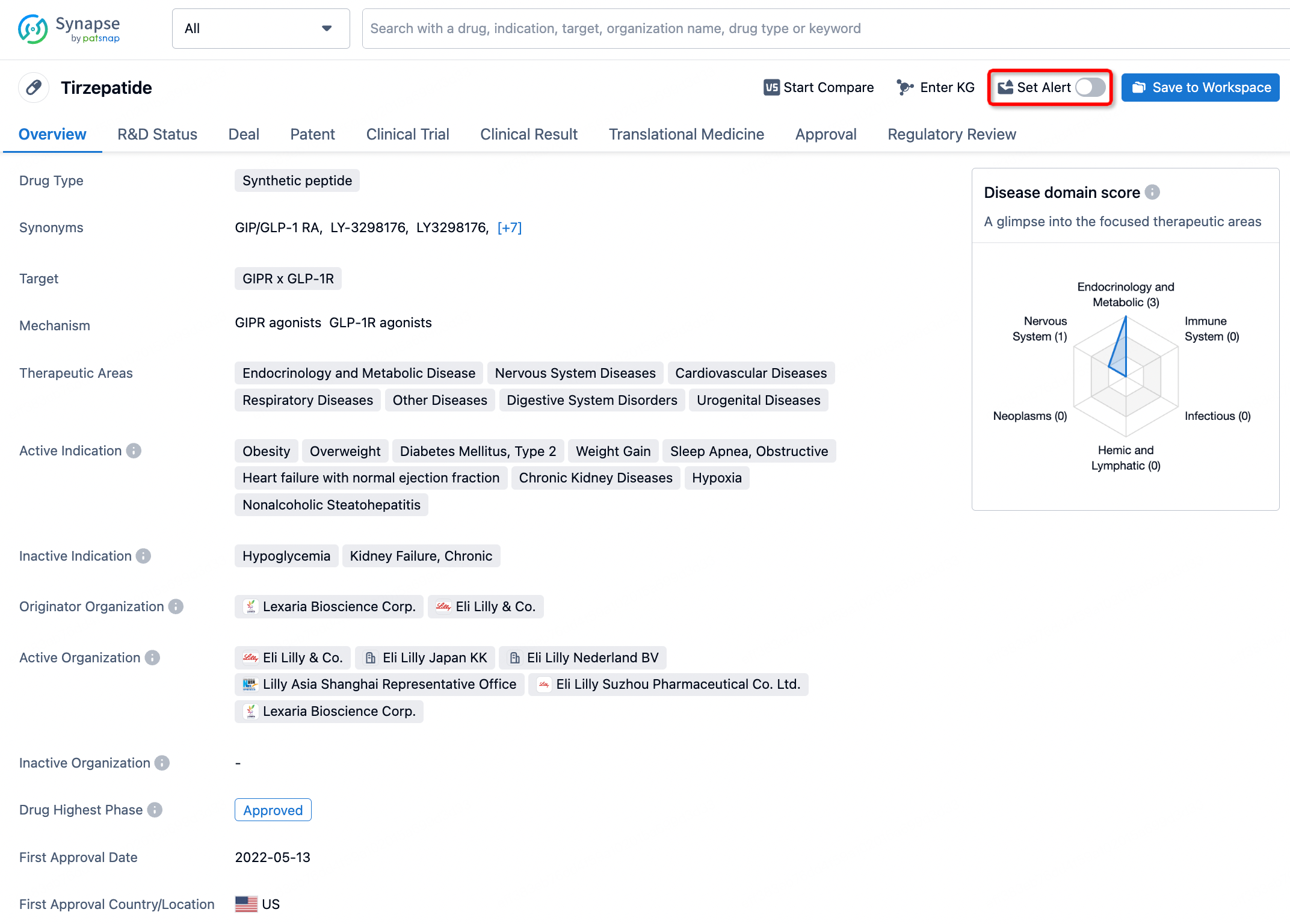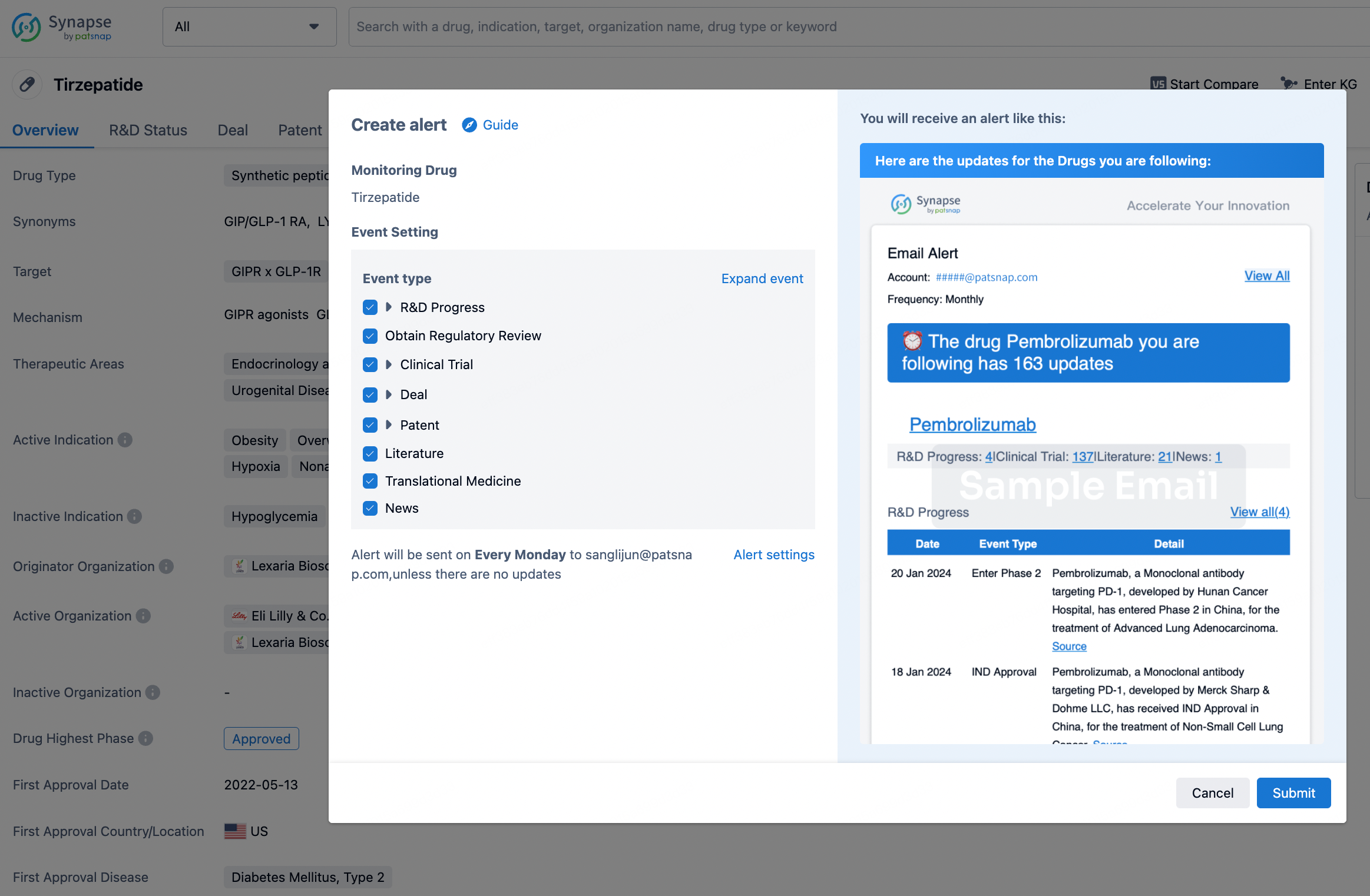Request Demo
What are the side effects of Ormeloxifene?
12 July 2024
Ormeloxifene, also known as Centchroman, is a selective estrogen receptor modulator (SERM) that is primarily used as a non-hormonal oral contraceptive. It is also utilized for the treatment of dysfunctional uterine bleeding. While Ormeloxifene is generally considered to be effective and well-tolerated, it can have side effects, as with any medication. Recognizing these potential side effects is crucial for anyone considering or currently using this medication.
One of the common side effects associated with Ormeloxifene is menstrual irregularities. This can include delayed menstrual cycles, spotting, or changes in menstrual flow. Some women may experience amenorrhea, which is the absence of menstruation. These menstrual changes are usually temporary and may normalize after discontinuing the medication.
Gastrointestinal disturbances are another possible side effect. Users may experience nausea, abdominal pain, or bloating. These symptoms are typically mild to moderate and often resolve on their own as the body adjusts to the medication.
Breast discomfort or tenderness is another reported side effect. Women might notice this particularly during the initial months of usage. While this can be uncomfortable, it usually diminishes over time.
Mood swings and emotional changes are also potential side effects. Some users may experience mood alterations, anxiety, or depression. It is important to monitor any significant changes in mood and consult a healthcare provider if these symptoms become severe or persistent.
Headaches are another possible side effect. These headaches can vary in intensity and may be accompanied by dizziness or light-headedness. Adequate hydration and over-the-counter pain relievers can help manage these symptoms, but persistent headaches should be reported to a healthcare provider.
Weight changes, both gain and loss, have been observed in some users. Although weight fluctuations may not be directly linked to Ormeloxifene, maintaining a balanced diet and regular exercise routine can help manage this potential side effect.
Skin reactions, though rare, can also occur. Some individuals might experience rashes, itching, or other dermatological issues. These symptoms are generally mild but should be discussed with a healthcare provider if they persist or worsen.
In rare cases, Ormeloxifene has been associated with more serious side effects, such as thromboembolic events (blood clots) and liver dysfunction. It is important to seek immediate medical attention if you experience symptoms like severe abdominal pain, jaundice (yellowing of the skin or eyes), or any signs of a blood clot, such as sudden shortness of breath, chest pain, or swelling in the legs.
Consulting with a healthcare professional before starting Ormeloxifene is crucial, as they can provide personalized advice based on your medical history and current health status. Regular follow-up appointments are also important to monitor any side effects and ensure the medication is working as intended.
In summary, while Ormeloxifene is an effective contraceptive and treatment for certain gynecological conditions, it is not without side effects. Being aware of these potential adverse effects and maintaining open communication with your healthcare provider can help manage and mitigate these risks, ensuring a safer and more effective use of the medication.
One of the common side effects associated with Ormeloxifene is menstrual irregularities. This can include delayed menstrual cycles, spotting, or changes in menstrual flow. Some women may experience amenorrhea, which is the absence of menstruation. These menstrual changes are usually temporary and may normalize after discontinuing the medication.
Gastrointestinal disturbances are another possible side effect. Users may experience nausea, abdominal pain, or bloating. These symptoms are typically mild to moderate and often resolve on their own as the body adjusts to the medication.
Breast discomfort or tenderness is another reported side effect. Women might notice this particularly during the initial months of usage. While this can be uncomfortable, it usually diminishes over time.
Mood swings and emotional changes are also potential side effects. Some users may experience mood alterations, anxiety, or depression. It is important to monitor any significant changes in mood and consult a healthcare provider if these symptoms become severe or persistent.
Headaches are another possible side effect. These headaches can vary in intensity and may be accompanied by dizziness or light-headedness. Adequate hydration and over-the-counter pain relievers can help manage these symptoms, but persistent headaches should be reported to a healthcare provider.
Weight changes, both gain and loss, have been observed in some users. Although weight fluctuations may not be directly linked to Ormeloxifene, maintaining a balanced diet and regular exercise routine can help manage this potential side effect.
Skin reactions, though rare, can also occur. Some individuals might experience rashes, itching, or other dermatological issues. These symptoms are generally mild but should be discussed with a healthcare provider if they persist or worsen.
In rare cases, Ormeloxifene has been associated with more serious side effects, such as thromboembolic events (blood clots) and liver dysfunction. It is important to seek immediate medical attention if you experience symptoms like severe abdominal pain, jaundice (yellowing of the skin or eyes), or any signs of a blood clot, such as sudden shortness of breath, chest pain, or swelling in the legs.
Consulting with a healthcare professional before starting Ormeloxifene is crucial, as they can provide personalized advice based on your medical history and current health status. Regular follow-up appointments are also important to monitor any side effects and ensure the medication is working as intended.
In summary, while Ormeloxifene is an effective contraceptive and treatment for certain gynecological conditions, it is not without side effects. Being aware of these potential adverse effects and maintaining open communication with your healthcare provider can help manage and mitigate these risks, ensuring a safer and more effective use of the medication.
How to obtain the latest development progress of all drugs?
In the Synapse database, you can stay updated on the latest research and development advances of all drugs. This service is accessible anytime and anywhere, with updates available daily or weekly. Use the "Set Alert" function to stay informed. Click on the image below to embark on a brand new journey of drug discovery!
AI Agents Built for Biopharma Breakthroughs
Accelerate discovery. Empower decisions. Transform outcomes.
Get started for free today!
Accelerate Strategic R&D decision making with Synapse, PatSnap’s AI-powered Connected Innovation Intelligence Platform Built for Life Sciences Professionals.
Start your data trial now!
Synapse data is also accessible to external entities via APIs or data packages. Empower better decisions with the latest in pharmaceutical intelligence.


